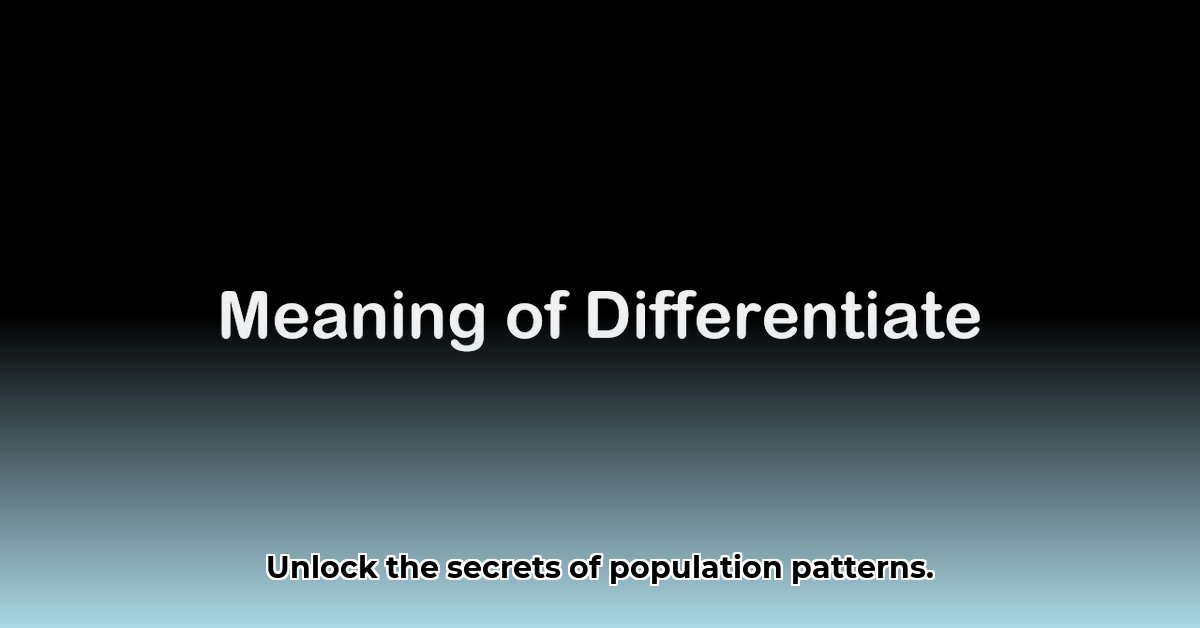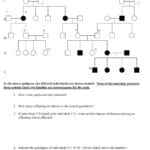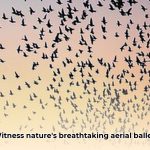Ever wonder why some cities feel crammed while others feel spacious, even if they have similar populations? It’s all about understanding population density and distribution – two things that sound similar but are actually quite different. This article will break down these concepts, showing you how they work and why they matter. We’ll even walk you through calculating density and interpreting patterns, so you can apply this knowledge to anything from understanding city planning to protecting wildlife habitats. For examples of varying population densities, check out city population data.
Differentiate Between Population Density and Population Distribution
Let’s discuss population – not just how many people are around, but where they are. We need two key concepts to understand this: population density and population distribution. They’re related, but they tell us different things about population mapping and spatial analysis.
Understanding Population Density: How Many People Are Packed In?
Think of a crowded subway car versus an empty hiking trail. That feeling of “crowdedness” is directly related to population density. It simply means how many individuals – people, animals, plants – occupy a specific area. We usually measure it as a number per unit area, like people per square mile or trees per acre. The higher the number, the more crowded it is. It’s a straightforward calculation: total number of individuals divided by the total area they occupy.
For example, imagine comparing New York City to a vast, rural area in Montana. NYC probably has a high population density; people live close together. Montana, on the other hand, likely has a much lower population density – plenty of space between people. Population density gives us a quick snapshot of overall concentration and settlement geography.
Understanding Population Distribution: Where Are They Located?
Population distribution takes things a step further with population patterns. It’s not just how many individuals are there, but where exactly they’re located within that area. Are they clumped together in villages? Spread evenly across the land? Concentrated along a river? Distribution describes these spatial patterns, population dispersion and urbanization trends.
Understanding distribution can reveal a lot about why people or organisms live where they do. Maybe they’re clustered near a vital resource like water or fertile land. Perhaps they’re avoiding dangerous areas or are influenced by historical events or social factors. Distribution helps us paint a more detailed and nuanced picture than density alone concerning human geography.
Differentiating Density and Distribution: A Clearer Picture
Here’s a simple analogy: imagine a swimming pool. Population density is like the total amount of water in the pool. Population distribution describes how that water is arranged: is it evenly spread, or is it mostly concentrated at the deep end?
Let’s summarize the key differences, including geographic distribution, in a handy table:
| Feature | Population Density | Population Distribution |
|---|---|---|
| Focus | The number of individuals in a given area | The spatial arrangement of individuals within an area |
| Measurement | A numerical value (e.g., people per square mile) | Often described qualitatively (e.g., clustered, dispersed, random) |
| Interpretation | Overall concentration of individuals | Patterns and reasons behind those patterns |
| Application | Urban planning, resource allocation, disease control | Habitat management, species conservation, social studies |
The Dance Between Density and Distribution: How They Interact
Although we treat them separately, population density and distribution are closely intertwined. High population density might cause a specific distribution pattern, such as people clustering around job centers or resources. Conversely, distribution can influence how we perceive density. A population spread evenly across a large area might feel less crowded than a population concentrated in a small space, even if the overall density is similar. They interact in environmental science.
Real-World Applications: Why This Matters
Understanding both density and distribution is essential for effective planning and decision-making in many fields. This includes spatial planning and population analysis.
-
Urban Planning: City planners use density data to decide where to build schools, hospitals, and transportation infrastructure. Distribution patterns help them understand potential challenges and opportunities for development, including socio-economic factors.
-
Conservation Biology: Conservationists monitor endangered species using both density and distribution data to determine population size and assess habitat quality. Understanding distribution patterns helps in identifying vital habitats to protect, which is critical to conservation efforts.
-
Public Health: Public health officials use these metrics to predict and control the spread of infectious diseases. Knowing where people are concentrated helps target interventions effectively, improving population health.
-
Agriculture: Farmers utilize this knowledge to optimize yield and manage pests, enhancing agricultural practices. Distribution patterns of crops and pests guide decisions on planting, fertilization, and pest control, influencing food security.
In short, population density provides a broad overview, while distribution reveals the intricate details. Together, they give us a deeper understanding of populations, whether human or ecological, allowing us to address challenges and make informed decisions. It’s not just about counting; it’s about understanding the why behind the numbers and how populations interact with their environment.
How to Standardize Population Distribution Measurement Across Diverse Ecosystems
Key Takeaways:
- Accurate population estimates are vital for effective conservation and management strategies.
- Various methods exist, each with strengths and weaknesses depending on the species and environment.
- Challenges include species-specific characteristics, logistical hurdles, and accounting for spatial and temporal changes in density.
Understanding Density vs. Distribution: The Foundation
Let’s start with the basics. Population density is the number of individuals per unit area. Think of it like how tightly packed sardines are in a can. Population distribution, however, describes where those individuals are located within that area. It’s the pattern they form—clumped, uniform, or random. Imagine those sardines; are they all crammed together, evenly spaced, or scattered randomly? This difference is crucial for biodiversity monitoring.
The Challenges in Standardization
Why is standardizing population distribution measurement across diverse ecosystems so tough in ecological studies? Ecosystems vary wildly! A desert has vastly different challenges than a rainforest. Mobile animals like birds pose different challenges than stationary plants. The methods that work well for counting elk might be unsuitable for tracking microscopic organisms. We need methods flexible enough to handle this diversity across ecological niches.
Methods for Measuring Population Distribution
Several techniques exist for measuring population distribution in biogeography. Here’s a summary of some of them:
- Quadrat Sampling: Dividing an area into smaller squares (quadrats) and counting individuals within each. This is good for stationary populations like plants, allowing for efficient data collection.
- Transect Sampling: Counting individuals along a line (transect) through the habitat. Useful for both plants and animals, transects provide a linear snapshot of the population.
- Mark-Recapture: Marking individuals, releasing them, then recapturing to estimate population size. Effective for mobile animals, mark-recapture helps estimate the animal population.
- Remote Sensing: Using technology like satellite imagery or aerial photography to estimate population densities. This is especially helpful for large areas, ensuring broader coverage.
- Environmental DNA (eDNA) Analysis: Collecting environmental samples (water, soil) and analyzing them for species-specific DNA. Useful for detecting the presence and distribution of species, especially aquatic organisms, without direct observation. Can be used to identify invasive species early.
- Acoustic Monitoring: Recording and analyzing sounds in the environment to detect and identify species. Effective for vocal animals like birds, bats, and marine mammals. Can be automated for long-term monitoring.
Refining Our Approach: Towards Standardization
So, how do we standardize population distribution measurement across diverse ecosystems? We need a multi-pronged approach, incorporating biodiversity assessment:
- Develop standardized protocols: Create guidelines specifying appropriate methods for various species and habitats, considering factors like mobility, detectability, and habitat structure. Having standardized protocols helps in environmental monitoring, improving data quality.
- Improve data analysis: Develop robust statistical models that account for biases inherent in different sampling techniques. Better data analysis leads to informed conservation decisions, reducing errors.
- Integrate new technologies: Explore the use of genetic tools for individual identification and remote sensing for large-scale assessments. This enhances the scope of ecological surveys, improving accuracy.
- Promote collaboration: Encourage collaboration among researchers to share data and refine methodologies across different ecosystems to advance conservation science.
- Emphasize Non-invasive methods: Prioritize methods that minimize disturbance to the environment and the species being studied. Non-invasive methods ensure ethical and sustainable research practices.
Addressing the Challenges: Practical Steps
Let’s look at some specific issues and how we can address them in wildlife management:
Challenge: Estimating population size accurately, especially for elusive or mobile species.
Solution: Combine different techniques, such as mark-recapture with remote sensing or eDNA analysis, to validate findings and improve accuracy. This ensures wildlife protection.
Challenge: Cost and time constraints limiting extensive sampling.
Solution: Design cost-effective sampling strategies, prioritizing areas likely to yield the most informative data. This will help in ecosystem management. Utilizing citizen science initiatives can also help expand data collection efforts.
Challenge: The need for long-term monitoring of population trends.
Solution: Establish long-term monitoring programs to track population dynamics and assess the effectiveness of various management strategies. This will improve ecosystem resilience.
Incorporate adaptive management strategies to adjust methods based on new data and changing environmental conditions.
[Oregon State University – Field Techniques for Population Sampling](https















